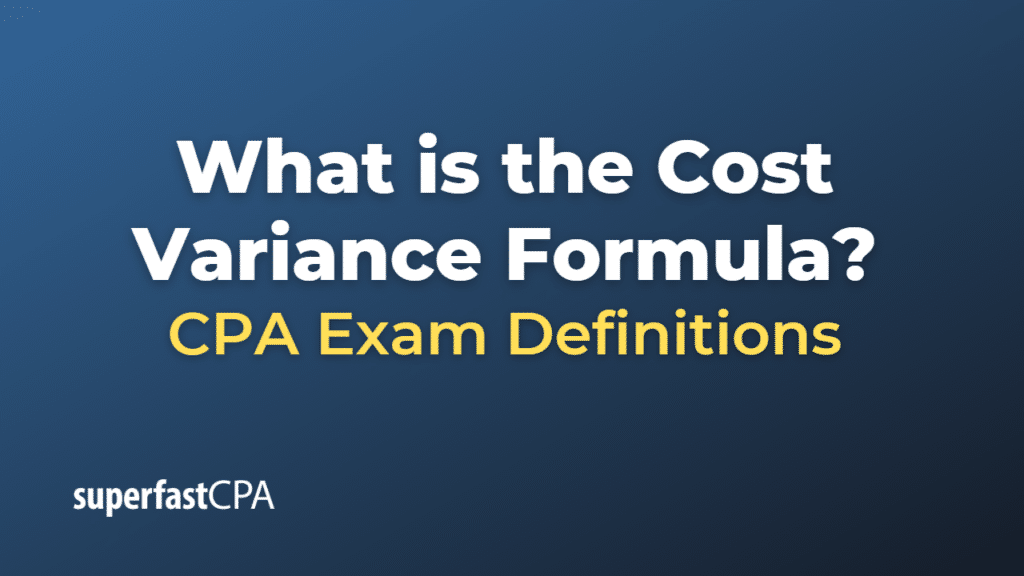Cost Variance Formula
In project management and financial analysis, the cost variance (CV) is calculated using the following formula:
Cost Variance (CV) = Earned Value (EV) – Actual Cost (AC)
Here is what each term means:
- Earned Value (EV): This is the value of the work actually performed. For example, if a project is 50% complete, then the earned value is 50% of the total project budget.
- Actual Cost (AC): This is the actual amount spent on the project or work performed to date.
If the cost variance is positive, it means the project or work is under budget. If the cost variance is negative, it means the project or work is over budget.
Example of the Cost Variance Formula
Let’s consider a simple project management scenario to illustrate the cost variance formula:
Suppose you are managing a project with a total budget of $100,000. Halfway through the project timeline, you expect that 50% of the work should be completed. So, the Earned Value (EV) at this point is $50,000 (50% of $100,000).
However, when you check the project’s accounts, you find that the Actual Cost (AC) of the work performed to date is $60,000.
To calculate the cost variance, you subtract the actual cost from the earned value:
Cost Variance (CV) = Earned Value (EV) – Actual Cost (AC) = $50,000 (EV) – $60,000 (AC) = -$10,000
The cost variance is -$10,000, which is a negative number. This negative cost variance indicates that the project is over budget. As a project manager, you might need to take corrective actions to bring the project costs back under control.
This is a simple example, but it illustrates how the cost variance formula can be used to monitor project costs and identify when a project is over or under budget.













